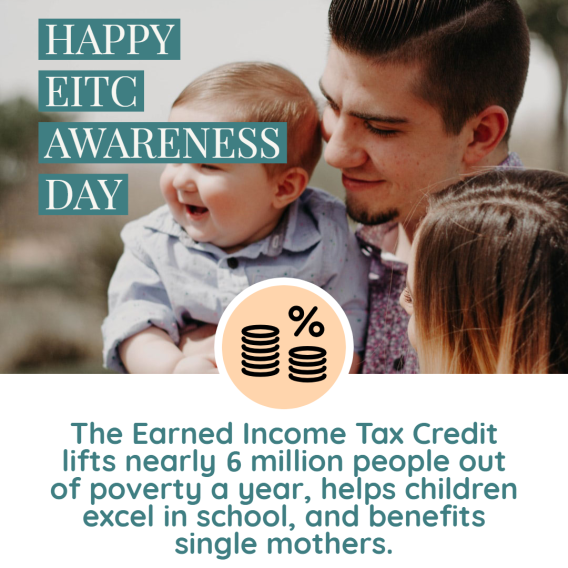
Many state and local government agencies that manage public benefits – such as Medicaid, the Children’s Health Insurance Program (CHIP), Supplemental Nutrition Assistance Program (SNAP, formerly called food stamps), Low Income Home Energy Assistance Program (LIHEAP), Temporary Assistance for Needy Families (TANF), Special Supplemental Nutrition Program for Women, Infants, and Children (WIC), or subsidized childcare – have ongoing contact with families and individuals who work and receive public benefits. Involving these agencies in tax credit outreach is an effective way to reach large numbers of eligible workers on a regular basis.
CONNECT WITH
- State or county program administrators
- Outreach workers who promote multiple benefit programs
- Caseworkers
STRATEGIES
1. Remind families there’s no downside to these tax credits.
EITC and CTC refunds aren’t counted for 12 months after receipt when applying for public benefits. Notify eligibility workers to inform families that they can claim the tax credits and qualify for benefits such as SNAP, Medicaid, and subsidized housing.

2. Reach out to newly eligible taxpayers.
Workers who have faced a drop in hours or wages may now be eligible, even if they have earned too much to qualify for the credits in the past. Connect with these workers through unemployment offices, job training programs, or government assistance programs. Also, reach out to people recently joining the workforce.
3. Include tax credit information in electronic benefit screening programs.
People who qualify for benefit programs may also qualify for the Earned Income Tax Credit (EITC) and the Child Tax Credit (CTC). Work with screening program designers to include information about tax credits and free tax filing help. Benefit Finder is one example of a benefit screening tool.
4. Team up with your local Workforce Investment Board.
Workforce Investment Boards must ensure contracts to provide job readiness, job placement, and post-employment services to TANF recipients entering the labor force. Encourage local boards to require companies with employment services contracts to share tax credit information with workers.
5. Include tax credit information in mailings.
State or county program managers can include flyers and envelope stuffers in benefit checks, WIC coupons, program renewal notices, waiting list information, rent notices in public housing, or other mailings.

ADDITIONAL RESOURCES
- Benefit Finder – Benefits.Gov
- Opportunities to Streamline Enrollment Across Public Benefit Programs – Center on Budget & Policy Priorities
- Tax Credits and Public Benefits: Complementary Approaches to Supporting Low-Income Families – Center for Law and Social Policy






